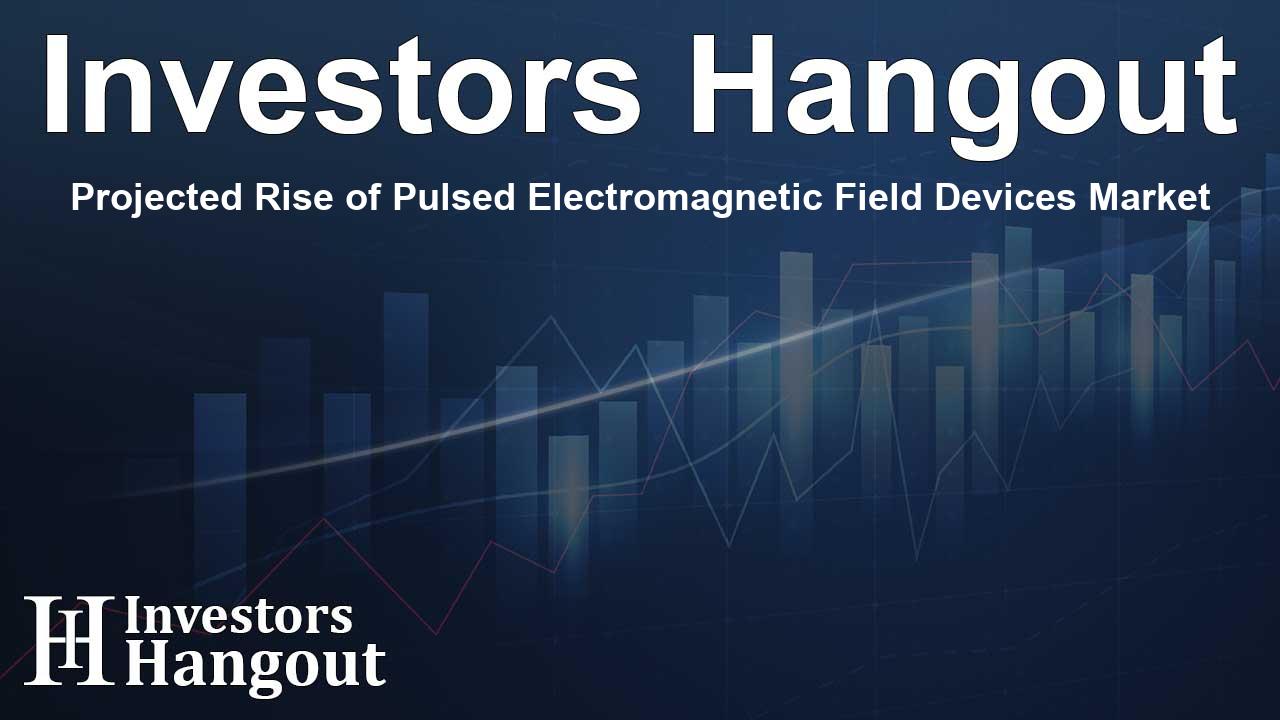Projected Rise of Pulsed Electromagnetic Field Devices Market

The Future of Pulsed Electromagnetic Field Therapy Devices Market
In recent years, the pulsed electromagnetic field therapy devices market has undergone significant transformations, with potential growth at a valuation of US$ 1,194.70 million anticipated by 2033. This promising trend follows a recent evaluation that placed its worth at US$ 755.82 million in 2024, showcasing a robust compound annual growth rate (CAGR) of 5.89% during the forecast years.
Growth Driven by Clinical Validations
This market's maturity is largely attributed to extensive clinical validations, shifting pulsed electromagnetic field therapy from a niche alternative to a widely accepted treatment option. Recent randomized trials have illustrated considerable benefits in reducing post-surgical edema, decreasing fracture-healing durations, and minimizing opioid use. Such promising data have prompted the US Food and Drug Administration to approve twelve additional devices since 2022. The cumulative total now stands at thirty-seven systems catering to various needs in healthcare.
Expansion in Europe
Across the Atlantic, Europe reflects a similar trajectory, with new certifications granted for portable devices aimed at home use. This reflects a growing confidence from regulators in ensuring safety and efficacy frameworks for these devices, which have gained popularity in major markets.
Market Drivers Fueling Demand
The growing acknowledgment and adoption of pulsed electromagnetic field therapy devices are also propelling interest among hospital procurement groups and venture investors. Unit shipments to surgical centers witnessed steady growth during the last year, further complemented by an impressive surge in online sales for class II pads on leading e-commerce platforms. Key factors supporting this demand include aging populations, a higher incidence of sports injuries, and a prevailing decline in long-term opioid usage.
Notable Market Insights
Several essential factors influence market dynamics:
- A significant increase in sports injuries and fracture-related cases globally.
- The rising preference for non-invasive, drug-free alternatives for pain management and healing.
- The growing awareness and knowledge of PEMF therapy among both patients and medical professionals.
Competitive Landscape: A Shift Towards Wellness
Once dominated by large organizations like Orthofix Medical and Zimmer Biomet, the competitive landscape is now being shaped by agile wellness brands such as Bemer and Oska. These companies have successfully introduced smaller, affordable devices targeting health enthusiasts outside traditional hospital settings. Their strategic focus on wellness, including improved sleep quality and recovery from workouts, resonates well with consumers, particularly through social-media channels.
Orthopedic Applications Remain Essential
Orthopedic applications continue to dominate the pulsed electromagnetic field therapy devices market, particularly in treating non-union fractures and managing postoperative edema. The evidence of efficacy is reinforced by findings from prestigious journals. In 2024, Medicare Part B reported processing over eighty-thousand claims related to these therapies, highlighting the financial implications of advocating for these devices within the healthcare system.
Neurotherapeutic Applications on the Rise
Nevertheless, there is a noticeable shift towards neurology and mental health applications, bringing new vitality into the market. Preliminary research indicates that low-intensity pulsed fields may reduce migraine frequency, and investigations are being conducted into treatments for depression, underscoring the expansive potential for these technologies.
Sales Channels and Distribution Trends
Hospitals continue to be the primary channel for these high-cost devices, driven by the demand for multipurpose tools that can enhance various medical applications. Procurement committees now focus on devices that rank high in user-friendliness and compliance with health standards. Furthermore, clinics specializing in chiropractic and sports medicine exhibit an increasing interest in portable models that accommodate quick interventions without extensive costs.
Regional Insights: North America vs. Asia Pacific
North America remains at the forefront of the market, bolstered by medical infrastructure and reimbursement pathways advantageous for the adoption of pulsed electromagnetic field therapy devices. However, the Asia Pacific region is showing rapid advancements, spurred by regulatory approvals and rising healthcare accessibility, which promises exciting developments in the near future.
Improving Reimbursement Policies
There have been favorable changes in reimbursement policies in recent cycles, allowing for broader coverage of musculoskeletal treatments. Notably, policy modifications in the United States and several European countries have commenced, paving the way for legislative support and ensuring better patient access and financial feasibility.
Integrating Digital Technologies for Enhancements
As the market evolves, the integration of digital therapeutic ecosystems with pulsed electromagnetic field therapy devices is likely to foster new value propositions. Innovations such as API-driven systems to monitor device usage and patient responses are on the horizon, promising seamless integration of therapy into broader healthcare solutions that prioritize patient satisfaction.
Looking Ahead: A Bright Future
Given the momentum and the influx of investments, the future of pulsed electromagnetic field therapy devices appears promising. The synergy of improved clinical evidence, regulatory backing, and increasing patient awareness lays a robust foundation for sustained growth in the coming years.
Frequently Asked Questions
What will the pulsed electromagnetic field therapy devices market be worth in 2033?
The market is projected to reach a valuation of US$ 1,194.70 million by 2033.
What is the expected CAGR for this market?
The compound annual growth rate (CAGR) for the market during the forecast period is 5.89%.
Which application category is driving demand in this market?
The pain management application continues to hold a significant share, accounting for 45% of the market.
How are digital technologies influencing this sector?
There is a growing trend to integrate digital health technologies with devices to enhance therapy delivery and patient engagement.
Which companies are leading the pulsed electromagnetic field therapy devices market?
Noteworthy players include Orthofix Medical, BEMER Group, and I-Tech Medical, among others.
About The Author
Contact Lucas Young privately here. Or send an email with ATTN: Lucas Young as the subject to contact@investorshangout.com.
About Investors Hangout
Investors Hangout is a leading online stock forum for financial discussion and learning, offering a wide range of free tools and resources. It draws in traders of all levels, who exchange market knowledge, investigate trading tactics, and keep an eye on industry developments in real time. Featuring financial articles, stock message boards, quotes, charts, company profiles, and live news updates. Through cooperative learning and a wealth of informational resources, it helps users from novices creating their first portfolios to experts honing their techniques. Join Investors Hangout today: https://investorshangout.com/
The content of this article is based on factual, publicly available information and does not represent legal, financial, or investment advice. Investors Hangout does not offer financial advice, and the author is not a licensed financial advisor. Consult a qualified advisor before making any financial or investment decisions based on this article. This article should not be considered advice to purchase, sell, or hold any securities or other investments. If any of the material provided here is inaccurate, please contact us for corrections.
